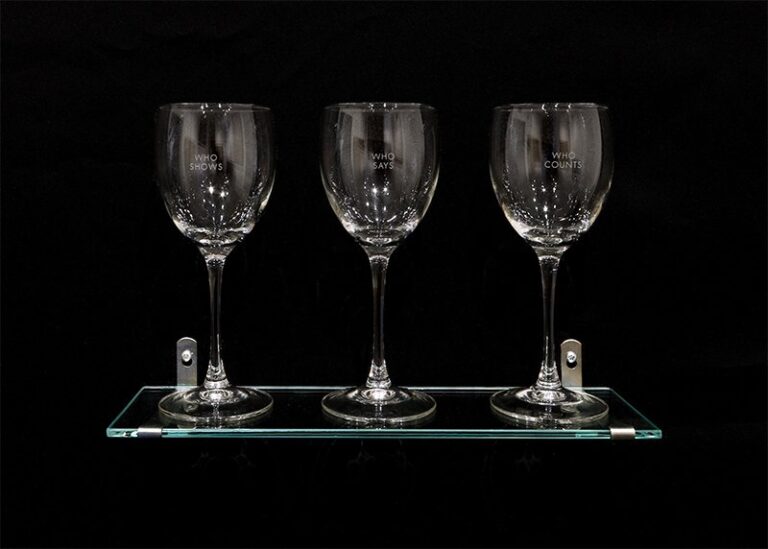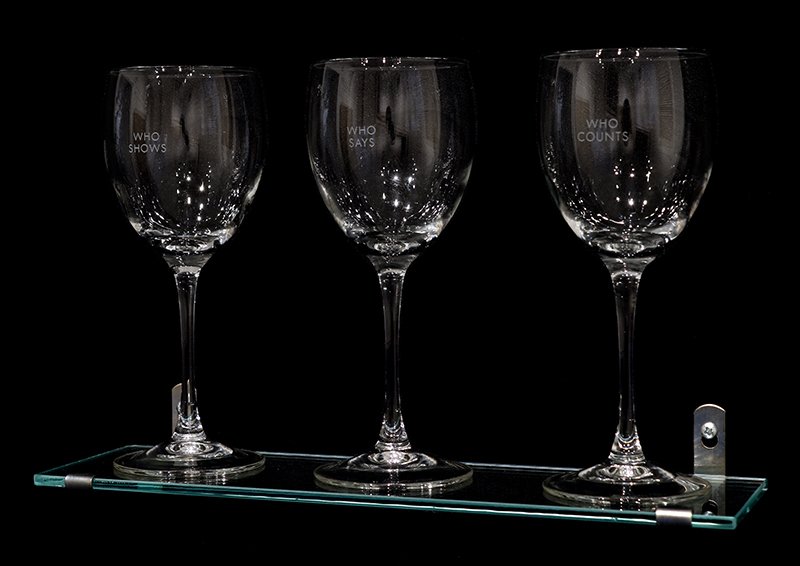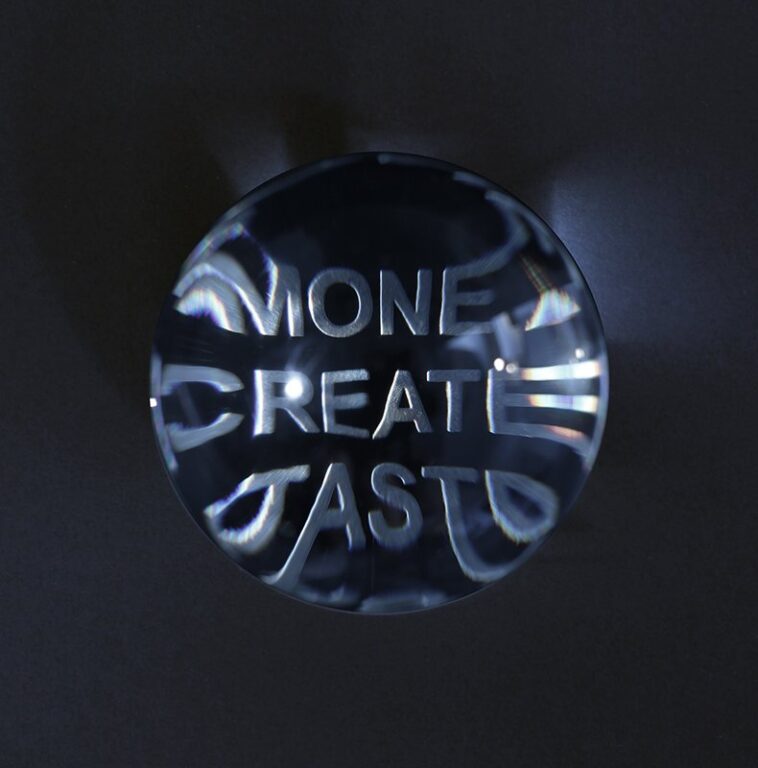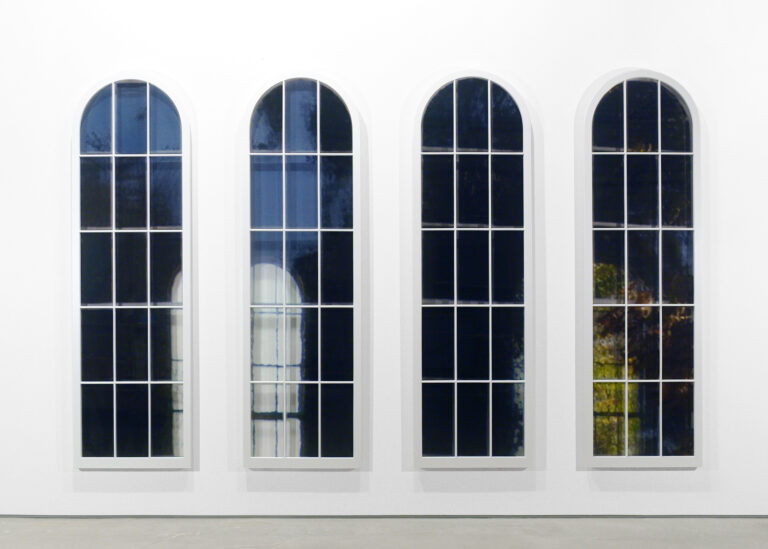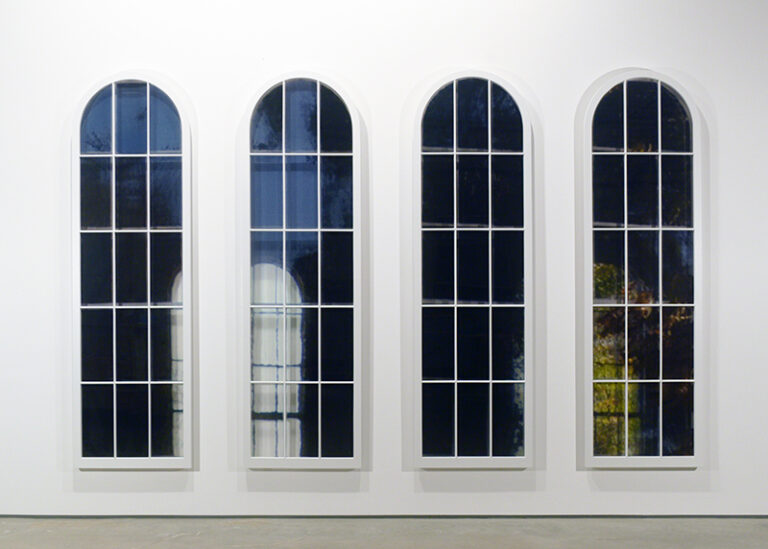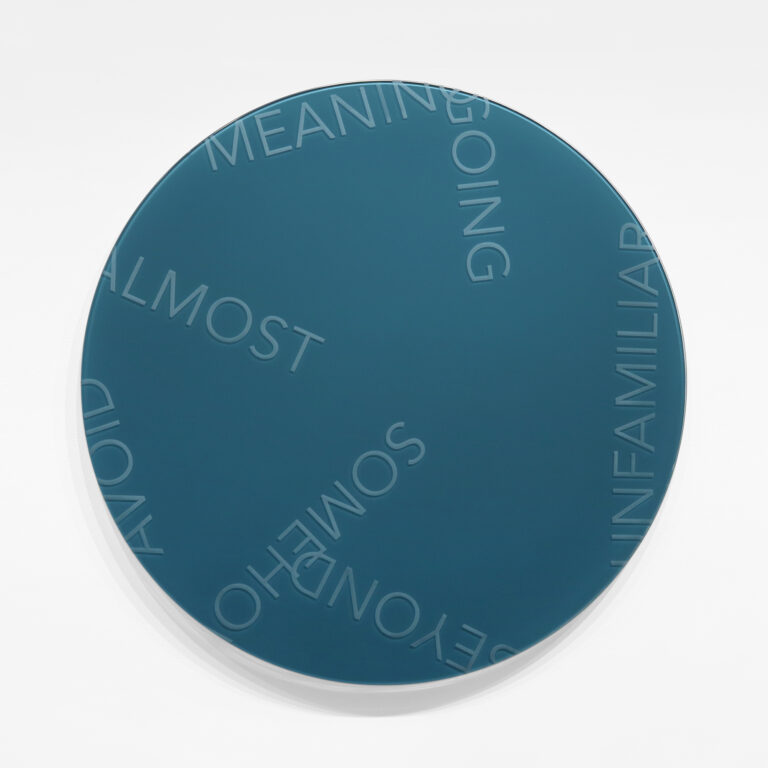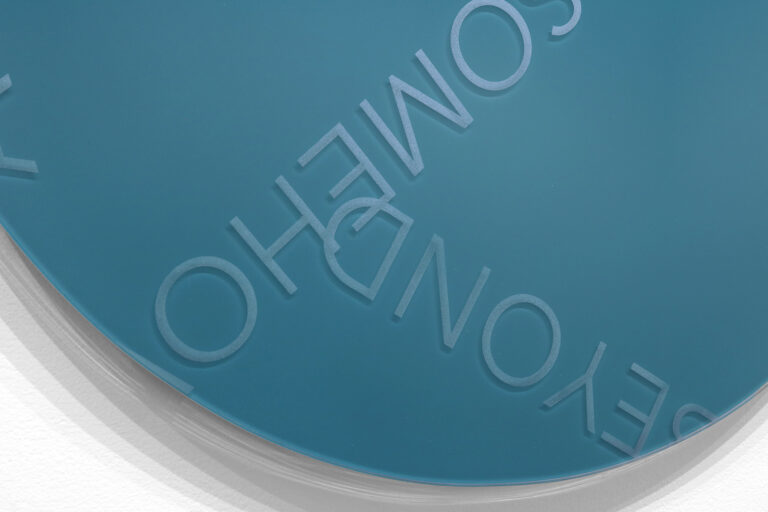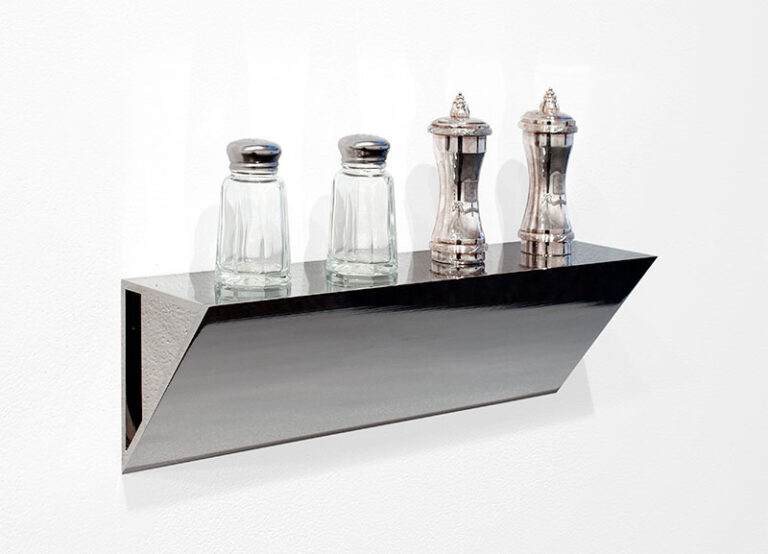Edition of 50
Glasses: 8 x 3 inches each (20.3 x 7.6 cm each)
Glass shelf: 14 x 4 1/2 inches (35.6 x 11.4 cm)
Signed and numbered on accompanying certificate
(Inventory #31957)
Louise Lawler’s “Who Says, Who Shows, Who Counts” includes three wine glasses that can be used to drink wine from or they can be set on the accompanying glass shelf. The phrases, “Who Says”, “Who Shows”, and “Who Counts” can be seen as statements, but also, punctuation-less, questions. The words have been etched onto the glass, just as how history is written is etched on our collective psyche.
As Lawler so succinctly shows, understanding the relationship between statement and question is an important step in making change. Hopefully, the work explores this by having viewers reflect upon, question, and re-imagine the rules of the art world, and by extension, the larger world. Taking glasses, normally used in elegant settings, to question, push back against and perhaps help move people’s actions and assumptions is as relevant an action today as it was in 1990 when she created the work.
Louise Lawler was born in 1947 in Bronxville, New York, and lives and works in New York. One of the foremost members of the ‘Pictures Generation’, in 2017 she was the subject of a solo retrospective, “WHY PICTURES NOW”, at MoMA, New York. She has had additional one-person exhibitions at Museum Ludwig, Cologne; Wexner Center for the Arts, Columbus, Ohio; Dia:Beacon, New York; and Museum for Gugenwartskunst, Basel. She has been included in numerous group exhibitions, including at the Walker Art Center, Minneapolis; Institute of Contemporary Art, Boston; MoMA PS1, New York; MUMOK, Vienna; Hammer Museum, Los Angeles; and the Whitney Museum, New York, which additionally featured the artist in its 1991, 2000, and 2008 biennials.
Edition of 50
Glasses: 8 x 3 inches each (20.3 x 7.6 cm each)
Glass shelf: 14 x 4 1/2 inches (35.6 x 11.4 cm)
Signed and numbered on accompanying certificate
(Inventory #31957)
Louise Lawler’s “Who Says, Who Shows, Who Counts” includes three wine glasses that can be used to drink wine from or they can be set on the accompanying glass shelf. The phrases, “Who Says”, “Who Shows”, and “Who Counts” can be seen as statements, but also, punctuation-less, questions. The words have been etched onto the glass, just as how history is written is etched on our collective psyche.
As Lawler so succinctly shows, understanding the relationship between statement and question is an important step in making change. Hopefully, the work explores this by having viewers reflect upon, question, and re-imagine the rules of the art world, and by extension, the larger world. Taking glasses, normally used in elegant settings, to question, push back against and perhaps help move people’s actions and assumptions is as relevant an action today as it was in 1990 when she created the work.
Louise Lawler was born in 1947 in Bronxville, New York, and lives and works in New York. One of the foremost members of the ‘Pictures Generation’, in 2017 she was the subject of a solo retrospective, “WHY PICTURES NOW”, at MoMA, New York. She has had additional one-person exhibitions at Museum Ludwig, Cologne; Wexner Center for the Arts, Columbus, Ohio; Dia:Beacon, New York; and Museum for Gugenwartskunst, Basel. She has been included in numerous group exhibitions, including at the Walker Art Center, Minneapolis; Institute of Contemporary Art, Boston; MoMA PS1, New York; MUMOK, Vienna; Hammer Museum, Los Angeles; and the Whitney Museum, New York, which additionally featured the artist in its 1991, 2000, and 2008 biennials.
